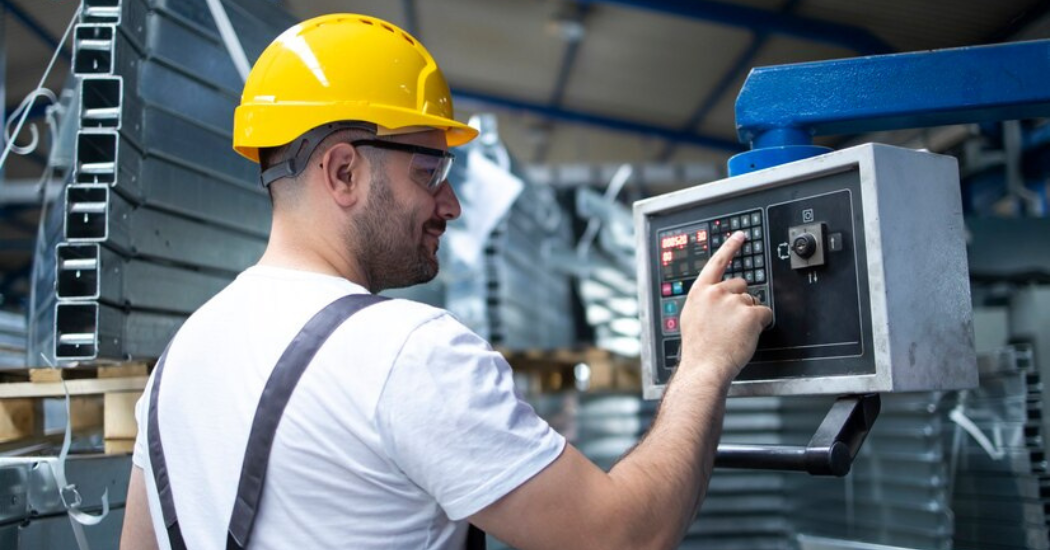The industrial sector is undergoing a seismic shift thanks to the Industrial Internet of Things (IIoT). It has become a mainstay for operational excellence in today’s hyper-competitive environment.
If you’re not already integrating IIoT into your maintenance strategies, you’re leaving money on the table and jeopardizing long-term viability. Let’s dive into IIoT’s transformative impact on maintenance.
The Shift from Reactive to Proactive Maintenance
Reactive maintenance, which involves fixing equipment after it breaks down, has its merits but is increasingly seen as the less efficient variant.
With the advent of the Industrial Internet of Things (IIoT), the focus is shifting towards more advanced strategies like predictive maintenance and even prescriptive maintenance. This evolution is not just about minimizing downtime. It’s also aimed at optimizing asset utilization and extending the lifespan of machinery. According to McKinsey, IIoT can reduce maintenance costs by up to 20%.
This means not only knowing when a machine is likely to fail but also understanding how to make the most of its entire lifecycle. Invest in machine learning algorithms that can analyze historical and real-time data to enable predictive and even prescriptive maintenance schedules.
You can also integrate these algorithms with your existing ERP systems for a seamless flow of information that different departments can act on within a short timeframe
Real-Time Monitoring and Data Analysis
Real-time monitoring has evolved beyond being a luxury and into an operational necessity of a digital factory. With IIoT, you can constantly monitor the performance and the health of your equipment.
To be precise, we’re talking about capturing everything from vibration and temperature to energy consumption. Data analytics tools can crunch these numbers in real time to provide actionable insights. If you’re not leveraging this data, you’re essentially flying blind.
Case Studies
A UK-based car dealership company partnered with N-iX to enhance equipment uptime and cut maintenance costs through an IoT predictive maintenance solution. The solution was based on vibration data collected from various automotive components, like pumps, motors, gearboxes, and fans.
On the healthcare front, WEINMANN Emergency, a German medical technology company, developed telemetry support for smart defibrillators. Now, the company utilizes real-time asset data for equipment health monitoring, thus preventing device failures related to defibrillation and monitoring.
These examples illustrate how real-time monitoring and predictive analytics are revolutionizing maintenance practices across a range of different industries.
Cost-Efficiency and ROI
Implementing IIoT in maintenance strategies offers substantial cost benefits and a promising return on investment (ROI). According to one report, nearly 50% of respondents expect an ROI from their digital operations within five years.
The key is to start small. Pilot IIoT implementations on your most critical assets and scale up based on the ROI. Additionally, don’t overlook the value of data monetization. The data you collect can be a revenue stream in itself when used responsibly and securely.
The ROI isn’t just monetary. It also includes gains in efficiency, productivity, and asset utilization. These benefits compound over time, making the initial investment in IIoT technologies well worth it.
Safety and Compliance
Safety isn’t just about avoiding accidents. The aim is to create a culture of proactive risk management.
IIoT can monitor environmental factors like gas leaks or hazardous conditions that human inspectors might miss. On the compliance side, automated data logging can be a lifesaver when you’re facing an audit.
The bottom line: IIoT not only keeps your operations running smoothly but also keeps your legal team happy. On top of that, IIoT can be a powerful tool in your Environmental, Social, and Governance (ESG) strategy, helping you meet sustainability goals and attract socially responsible investments.
Tailored Strategies for Different Stakeholders
For Original Equipment Manufacturers (OEMs), the writing is on the wall: either integrate IIoT features into your products or risk becoming obsolete. End-users, you’re not just maintaining assets; you’re managing a portfolio of investments. IIoT can provide the data you need to optimize this portfolio.
Equipment suppliers’ customers are demanding more than just machinery. They want solutions that include maintenance optimization.
Additionally, IIoT allows you to transition from a break-fix model to a service-level agreement (SLA) based on actual performance metrics.
For policymakers and regulators, understanding the nuances of IIoT can help in crafting legislation that fosters innovation while ensuring safety and data security.
Challenges and Roadblocks
Let’s not sugarcoat it: IIoT implementation comes with its share of headaches. Here are some of the key challenges:
- Cybersecurity: A single breach can compromise not just data but also critical infrastructure.
- Interoperability: Your IIoT devices need to communicate seamlessly with legacy systems.
- Initial capital expenditure: The upfront costs can be daunting, especially for smaller operations.
- Data privacy: With great data comes great responsibility; ensuring compliance with data protection laws is crucial.
- Talent gap: The industry is facing a shortage of skilled professionals who can manage and interpret IIoT data.
Each of these challenges requires a strategic approach for mitigation. The good news is that the industrial sector is rapidly evolving to address these issues, and early adopters will have a competitive edge.
The Future of IIoT in Maintenance
Looking ahead, technologies like 5G and edge computing will likely turbocharge IIoT capabilities. Imagine real-time analytics performed at the edge, right at the data source.
The future is as much about maintaining equipment as it is about optimizing workflows and supply chains. Keep an eye on the development of quantum computing and its potential applications in data analytics and machine learning for IIoT.
If you’re not planning for this future, you’re planning for obsolescence.
 For over 30 years, Eric Whitley has been a noteworthy leader in the manufacturing space. In addition to the many publications and articles Eric has written on various manufacturing topics, you may know him from his efforts leading the Total Productive Maintenance effort at Autoliv ASP or from his involvement in the Management Certification programs at The Ohio State University, where he served as an adjunct faculty member.
For over 30 years, Eric Whitley has been a noteworthy leader in the manufacturing space. In addition to the many publications and articles Eric has written on various manufacturing topics, you may know him from his efforts leading the Total Productive Maintenance effort at Autoliv ASP or from his involvement in the Management Certification programs at The Ohio State University, where he served as an adjunct faculty member.
After an extensive career as a reliability and business improvement consultant, Eric joined L2L, where he currently serves as the Director of Smart Manufacturing. His role in this position is to help clients learn and implement L2L’s pragmatic and simple approach to corporate digital transformation.
Eric lives with his wife of 35 years in Northern Utah. When Eric is not working, he can usually be found on the water with a fishing rod in his hands.
Image by aleksandarlittlewolf</a> on Freepik




